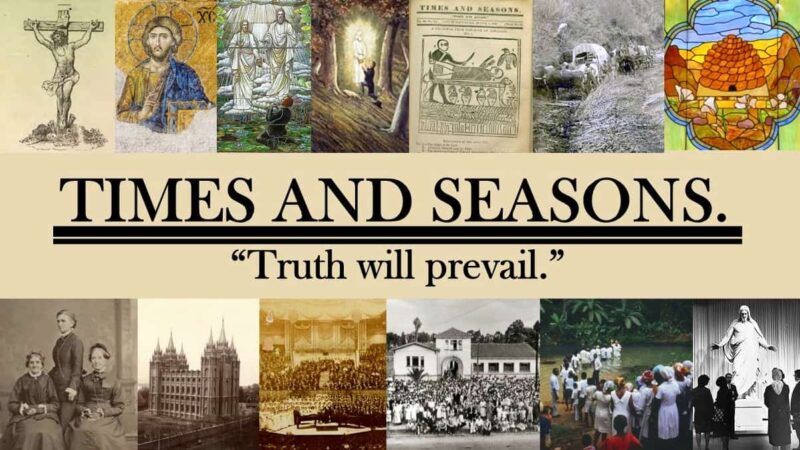The seventh and final book out of the Themes in the Doctrine and Covenants series that I read is the one by Mason Kamana Allred on Seeing. This one and Philip Barlow’s entry on Time seemed like the most strange or esoteric topics in the series, but like Barlow’s book, Allred’s offers interesting insight and ideas that can help individuals live the gospel.
Throughout the book, Allred is focused on discussing what the Doctrine and Covenants teaches about seeing things as they truly are. Within our faith, there is a lot of material aspect both to that seeing and what is being seen. As Allred puts it, “The Doctrine and Covenants is then visionary, not just because it contains heavenly visions, but more especially because it teaches us to see the spiritual in the temporal” (p. 32) and “getting to the spiritual is achieved for Latter-day Saints through the material, not by running from it” (p. 100). He also discusses how truly seeing into the nature of things involves more than eyesight alone, noting that the interesting instructions in section 129 offer “a call to see with our whole bodies, hearts, and minds. This is key to seeing things as they really are and eventually seeing the Lord. This is what the Doctrine and Covenants, as a whole, challenges us to learn” (p. 95).
Allred also offers timely warnings about the need to be aware of the extent to which we can be caught up in the digital world. “The introduction of mobile screens in the twenty-first century also exponentially increases our time spent in the visions of others … and these visions are often not healthy or beneficial despite their reach and popularity. We can end up living inside someone else’s imagination, bias, and worldview when we take on and inhabit their vision” (p. 70). I was quite surprised that he didn’t draw on David A. Bednar’s talks about “Things as They Really Are” during this discussion, though that’s not a necessity for the topic. Regardless, for me, this was an important reminder that will probably be the most lasting impact in my life from reading the book.
There is also some interesting discussion about seer stones and how they might have worked. Allred wrote that descriptions of those close to Joseph Smith described him “looking at a seer stone placed in his hat to gain spiritual vision. The setup was important because the stone(s) would reportedly shine forth in the darkness of the hat and allow Joseph Smith to see on the stone’s surface or in his mind what he should dictate as translation” (p. 67). He added: “Whether Joseph Smith literally saw the exact text on the surface of the stone to read out loud to his scribes, as David Whitmer asserted, or Joseph Smith ‘saw’ the translation as concepts to capture in his mind’s eye, the process of translation was rooted in looking” (pp. 68–69). I found it significant because it was a discussion that allowed for different ways in which the seer stones might have functioned rather than trying to force people into understanding the process in a specific way when we don’t have enough information to do so.
Both Mason Kamana Allred’s Seeing: Themes in the Doctrine and Covenants and the series as a whole have been worthwhile to read. I recommend them to Latter-day Saints looking for a devotional analysis of the Doctrine and Covenants against a scholarly backdrop.
